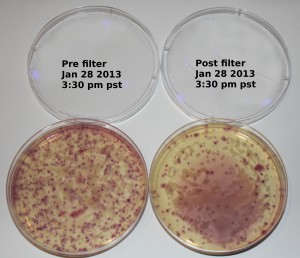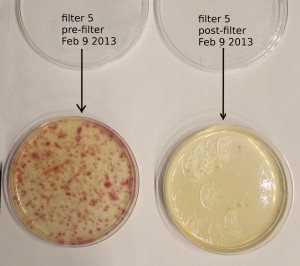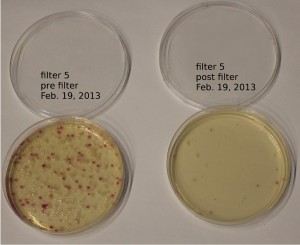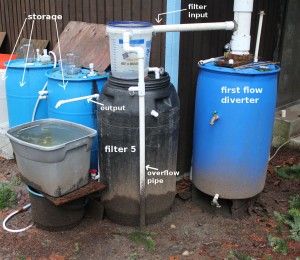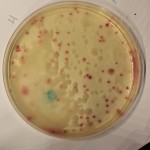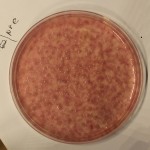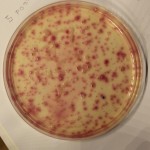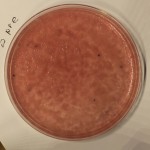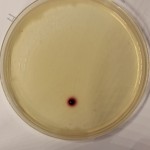This is yet another update on what has been learned regarding the construction and operation of a small slow sand water filter.
These are issues that stand out after experience building, testing, and operating small slow sand filters over the past 6 years:
1. Fine sand (.15 mm effective size) allows for high quality water output both chemically and biologically.
2. Fine sand results in slow output flow rate.
3. Fine sand becomes clogged very quickly if the input water is turbid.
4. Coarse sand (between .35 mm and .50 mm effective size) results in high flow, and lower water output quality.
5. Coarse sand does not clog as quickly as fine sand.
6. Sand used in a slow sand filter will work best if the grains of sand are all very close to the same size (a low uniformity coefficient of 2 or less)
7. Use very coarse sand only at the bottom of the filter (the bottom 5 or 6 inches in a 30 inch tall container) the rest of the sand should all be much finer (smaller grains) sand
8. Roof water quality will vary drastically depending on the time of year, the condition of the roof surface, and the physical location of the roof surface with respect to trees, industry, and wildlife.
9. Some sort of pre-filtering is absolutely necessary if roof water is being filtered by a slow sand filter. A wire screen followed by a first flush diverter is one way to pre-filter roof water. A “settling container” is another way to “pre-filter” roof water.
10. Some sort of re-circulation of output water back through the filter is helpful when filtering roof water.
If roof water is being filtered:
11. Know that water quality will vary considerably
12. Have some sort of pre-filtering in place and,
13. For high water quality; use fine sand and recirculate the output water through the filter at least once
14. Use some sort of secondary purification process such as uv sterilization, boiling, or chlorination
If a slow sand filter is cleaned by “wet harrowing” :
15. be absolutely certain to stop the output flow while the filter is being cleaned by wet harrowing. If the output is not stopped, the contaminated water will flow down into the lower areas of the filter and foul the output. This is not good.
